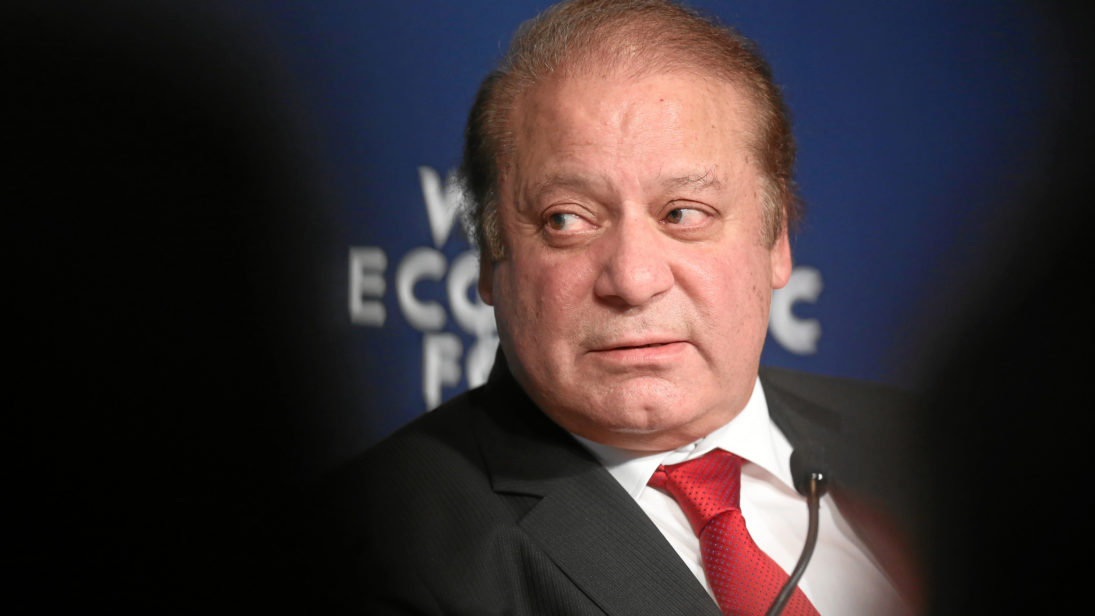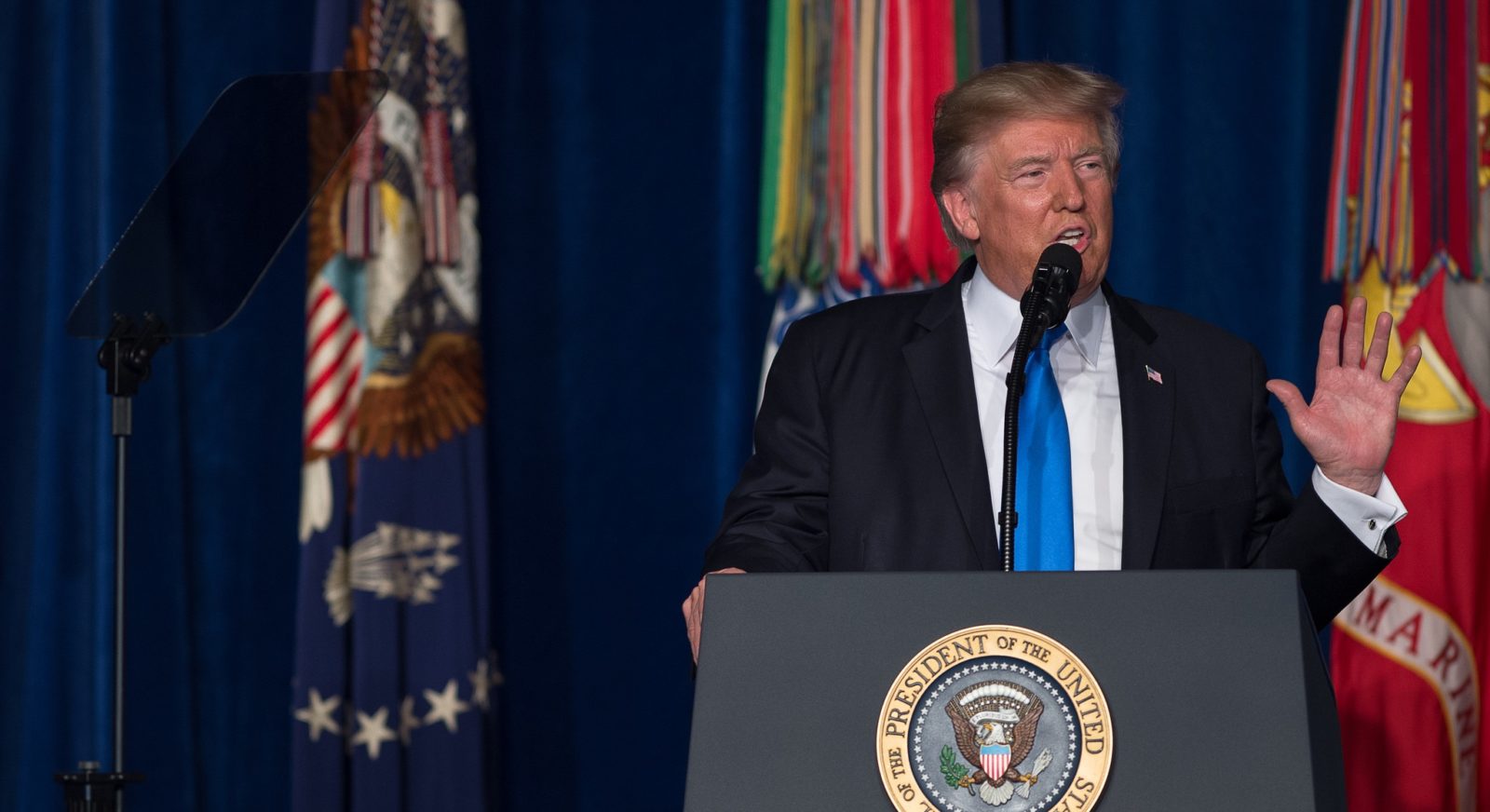
2017 has been a tumultuous year for Pakistan, marked by domestic and regional instability. The country’s domestic politics were marred by Nawaz Sharif’s dismissal by the Supreme Court followed by Barelvi activism and religious-political mobilization in Islamabad. On the foreign policy front, Pakistan’s relations with the United States were tenuous and its ties with Afghanistan were strained throughout 2017. Despite this domestic political turmoil and regional volatility, Pakistan’s political institutions have remained intact and fatalities from terrorist violence have decreased, leaving cause for optimism as the country heads into the decisive 2018 elections.
Judiciary Strikes Again
Since its democratic transition in 2008, Pakistan has witnessed the increasing judicialization of politics. In the last ten years, Supreme Court activism has led to the resignation of three heads of state and government: former President Pervez Musharraf, former Prime Minister Yusuf Raza Gilani, and now former Prime Minister Nawaz Sharif. A bewildered Sharif reluctantly accepted the Court’s decision in July and resigned after a Joint Investigation Team (JIT) was constituted to inquire into his and his family’s irregular financial dealings.
The Court’s inordinately strict view of accountability has unleashed a cataclysm of claims and counter-claims, with Sharif’s party, the Pakistan Muslim League (Nawaz) (PML-N) now seeking opposition leader Imran Khan’s disqualification. Hence, the inevitable paradox: while the presence of accountability measures typically strengthens the robustness of democratic systems, they can be weakening if they undermine domestic stability in other ways. If politicians can exploit accountability mechanisms for their own political gain, the political system threatens to come crashing down like a house of cards.
Elections Bill Controversy and Demonstrations
The PML-N’s amendment to the Elections Bill 2017 sparked a controversy that added to Pakistan’s political instability after a new religious-political actor, the Tehreek-e-Labbaik Ya Rasool Allah (TLYR), staged a sit-in in Islamabad for seventeen days in November. The political rise of TLYR and their electoral mainstreaming—the party contested the crucial Lahore by-elections while reiterating their support for strict blasphemy laws and bagged 7,130 votes—signals their desire to represent a religious alternative to the traditional political parties in the electoral arena. The sit-in ended after the resignation of the law minister as consequence of a deal mediated by the Army.
The controversy was concerned with changes the bill would make to the election oath declaration that allegedly questioned the finality of the Holy Prophet. The bill also removed two clauses of the Elections Order that would reverse the status of Ahmadis as non-Muslims. Religious organizations contended that these actions were undertaken with a view to pave the way for Ahmadis to be included in the Muslim voter registration list. This would have won PML-N Ahmadi votes in the 2018 general elections.
However, one week after the bill was passed, the government restored the deleted clauses and returned the electoral declaration to its original form. Though the clauses were reinstated—the government cited a clerical error—supporters of the TLYR marched on to Islamabad demanding the law minister’s removal. The writ of the government was brazenly challenged by religious protesters and its incompetence was put on display when a half-hearted police operation failed to dismantle protesters. With its own initiatives failing to bear fruit, the government deployed the military to help civilian personnel cope with the demonstrations, which led to the eventual deal that ended the protests.
While the religious right is not expected to garner enough votes to win seats in the next elections, their presence is indicative of a rising religious sentiment and dismay with traditional political parties for their corruption and inability to govern effectively.

Pakistan and the United States: Between Engagement and Estrangement
As anticipated, U.S. President Donald Trump’s national security team formulated a hardline security policy for the conflict in Afghanistan, with negative ramifications for U.S.-Pakistan relations. In a major speech announcing the United States’ new South Asia strategy in August, Trump criticized Pakistan for “housing the very terrorists that we are fighting” in Afghanistan. Islamabad responded strongly to this accusation by reiterating that Pakistan has eliminated all safe havens from its territory, including those of the Haqqani Network.
Though relations witnessed a short-lived bonhomie when Pakistani troops rescued Canadian hostages from Taliban captivity, Pakistan and the United States continued to oscillate dangerously between engagement and estrangement throughout 2017. In November, as part of a sweeping military budget authorization bill for the 2018 fiscal year, the United States Congress authorized the release of $700 million from the Coalition Support Fund (CSF) to reimburse Pakistan for activities carried out to support U.S. action in Afghanistan. However, half of this funding still requires Secretary of Defense Jim Mattis’ certification, which remains contingent upon the secretary’s determination that Pakistan is “significantly disrupting the safe havens, fundraising and recruiting efforts, and freedom of movement of the Haqqani Network in Pakistan.” Notably, Islamabad will no longer be required to show that it is acting against safe havens for the anti-India Lashkar-e-Taiba (LeT) to receive reimbursements from the CSF under the terms of this bill. This change sheds light on the new American objective of resolving the Afghan conflict as quickly as possible by concentrating exclusively on non-state actors directed at Afghanistan and not those directed at India.
Still, the trust deficit remains. Relations hit a snag once again in the wake of the Lahore High Court’s decision to release LeT chief Hafiz Saeed on account of insufficient evidence linking him to the 2008 Mumbai terror attacks. This has led the United States to put direct pressure on Pakistan to re-arrest Saeed, with the White House press secretary declaring that this “belies Pakistan’s claims that it will not provide sanctuary for terrorists on its soil.”
Plagued by fundamental differences in perception, the bilateral relationship will likely remain tumultuous as the United States prioritizes concluding the 16-year-old Afghanistan conflict. Heading into 2018, it does not seem likely that the United States will become more sympathetic of Pakistan’s security concerns regarding the porous border with Afghanistan. For this reason, U.S.-Pakistan ties appear to be bound for continued estrangement.
Pakistan and Afghanistan: Falling Apart
Relations between Pakistan and Afghanistan nose-dived in May after a Pakistani census team aided by the army came under attack at the Chaman border from the Afghan Army. In contention was the status of villages on a porous border to which both states lay claim. The Pakistani Army retaliated, leading to the death of more than 50 soldiers on Afghanistan’s side, a claim later denied by the Afghan government.
As relations worsened, Pakistan started work on fencing its border with Afghanistan in order to curb alleged terrorist infiltration and hardened its stance on the repatriation of Afghan refugees due to security risks. These security and political considerations undermined bilateral trade and pushed Afghanistan towards India. If ties between India and Afghanistan further consolidate in 2018, suspicion between Pakistan and Afghanistan will grow, driving the two states even further apart.
Pakistan in 2018: Optimism Despite Shocks?
Despite political shocks, Pakistan’s nascent democracy continues to hold as political parties gear up for the 2018 elections. Pakistan would do well to ensure political stability before, during, and after the elections in order to promote a smooth transition of power and avoid the excruciating politics of sit-ins and demonstrations in the process. At the same time, Islamabad must also carefully navigate regional geostrategic complexities emanating from Afghanistan, particularly since instability and conflict might negatively impact potential economic gains from initiatives like the China-Pakistan Economic Corridor (CPEC).
Editor’s note: This is the third piece in our 2017: Year in Review series. In this six-part series, our contributors assess the most significant domestic and foreign policy developments in Afghanistan, Pakistan, Bangladesh, India, Sri Lanka, and Nepal in 2017 and how these developments will impact the countries and the region in 2018. Read the entire series here.
***
Editor’s Note: Click here to read this article in Urdu; click here to read this article in Hindi
Image 1: World Economic Forum, via Flickr
Image 2: Jim Mattis via Flickr


